Buying a used gun can be a daunting task.
It’s one thing buying a brand new gun–those should be fine, right?
But buying one that’s been run by an unknown number of shooters (and shots) is another story entirely…
If you’re looking to get a break on a gun purchase by buying used or know someone who is, read on. These are our tips for how to buy a used gun.
Table of Contents
Loading…
Pick a Gun, (Not) Any Gun
For the purposes of this article we’re assuming you’re after a gun to use, not a collector’s item.
The first question to ask yourself is the same as when choosing any gun: what do you need? Are you in the market for a new carry gun, looking for a pistol for plinking, or interested in trying your hand at competition?

If your purpose is buying a gun for your significant other and they didn’t tell you they want a specific model and caliber, pump the brakes.
This usually ends up being a guys-buy-girls-gun scenario and I have one word for those: don’t.
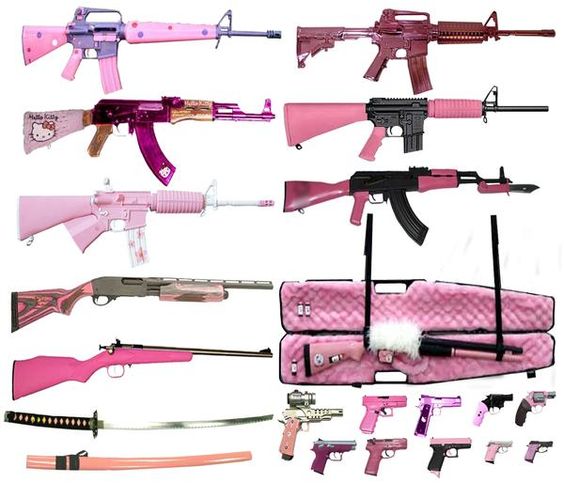
Unless you know exactly which gun she wants because she is either well-versed in firearms or has tried a bunch of models out for herself, don’t do it.
Let her–or him–choose her–or his–own gun. We also have our Favorite Handguns for Women list (actually chosen by women).
Choose the model and caliber of your gun carefully, remembering that just because a specific gun is popular or being posted all over social media doesn’t mean it’s the gun for you. We’re all individuals with differently sized hands, varying grip strength, and an assortment of skill levels.
If you’re buying a used gun for concealed carry make sure it not only fits your hands but can be concealed. The last thing you want is to belatedly discover your latest purchase prints so blatantly a blind man could spot it from fifty feet away.

And if it’s competition guns you’re after, study the rulebook for whatever you’re planning to try your gun hand at–IDPA, USPSA–and for the specific division you’d like to compete in. Make sure the gun you buy can actually be used in competition.
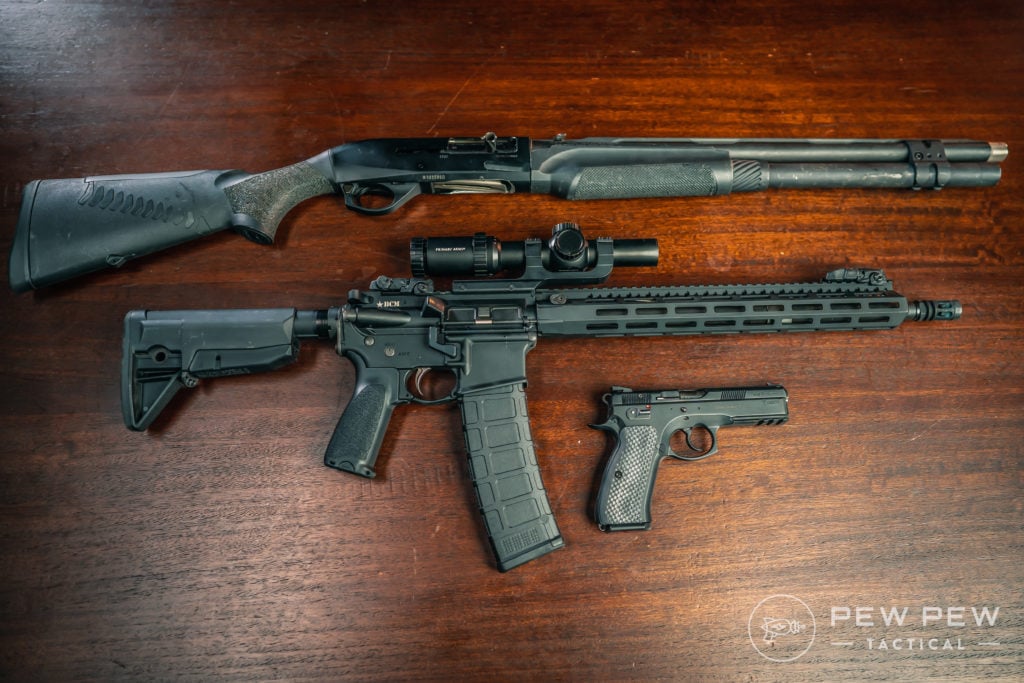
In a Perfect World…
If things were perfect you’d be able to test-shoot any gun you were considering purchasing. There would be a neatly-kept log of rounds fired through it, cleaning schedules, and parts replacements. Every moment of use would be recorded for your perusal.
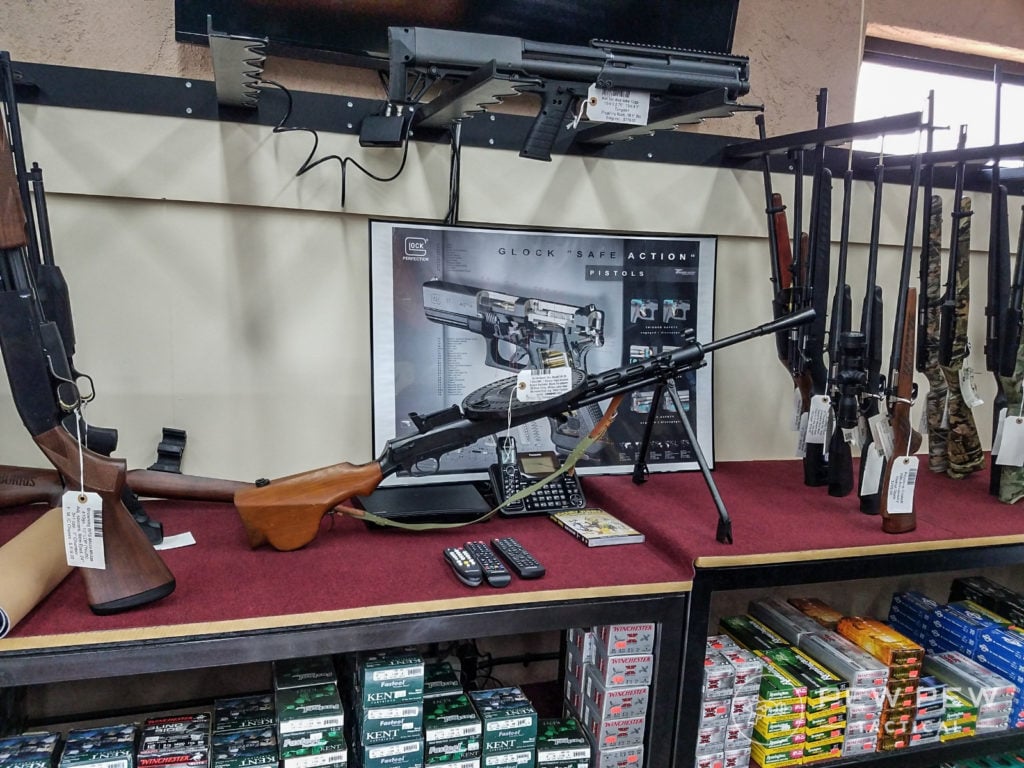
That isn’t how it works, though.
Just as you’re not going to find used cars with meticulously-kept records you’re not finding guns that way. In fact, you are way less likely to find a gun with any kind of written record. Most gun owners flat-out don’t think of it.
Check All the Parts
Taking the time to check all moving parts for functionality might seem obvious but would you really think to push and prod every part? When you’re examining a used gun at the counter, take the time to check All the Parts.
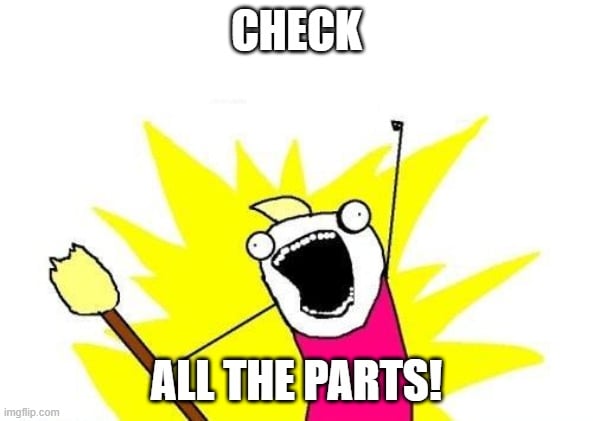
Here’s a handy checklist for various platforms…
Semi-auto handguns:
- Does the slide move smoothly? Does it lock back? (You won’t be able to find out if it locks back as it should when a mag is empty without live fire but you can at least lock it back by hand.)
- When you lock the slide back, rotate the gun so you can see the underside of the slide. Do the ears of the slide have extremely uneven wear?
- Does the safety not only move as it should be work properly?
- Does the slide lock work and can it be manipulated easily?
- Do magazines drop smoothly and can they be seated in place without being slapped or forced?
- Are the sights firmly in place or are they loose or other off, and can they be adjusted or tightened?
- On a 1911, is the grip safety working or did the previous owner disable it?
- How does the trigger feel during dry fire? Does it function well and reset properly or does it stick or otherwise fail?
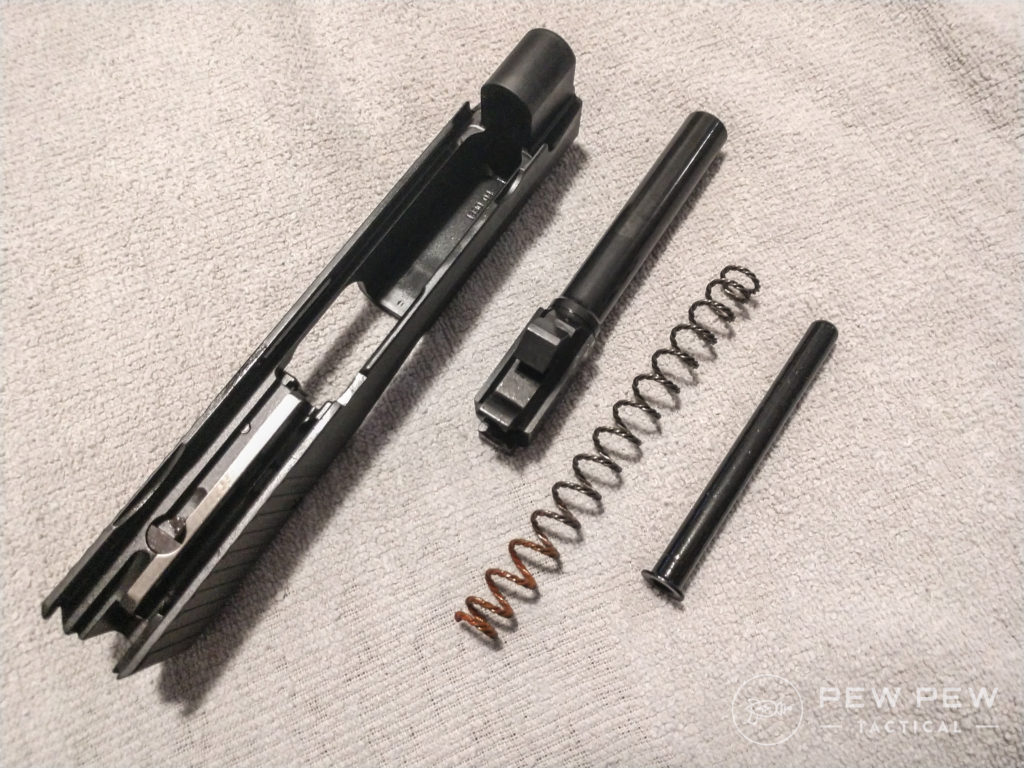
Revolvers:
- Is the cylinder well-fitted to the frame or does it rattle?
- Does the cylinder align with the barrel?
- Does the cylinder rotate?
- Can the hammer be manipulated well and does it work reliably without sticking?
- If there is a safety, does it work?
- Does the cylinder release work as it should?
- If it has a front blade or otherwise fixed sight, is it in good shape or has it been damaged?
- If it has replaceable sights are the firmly in place and can they be easily adjusted?
- How does the trigger feel? Is it working right?
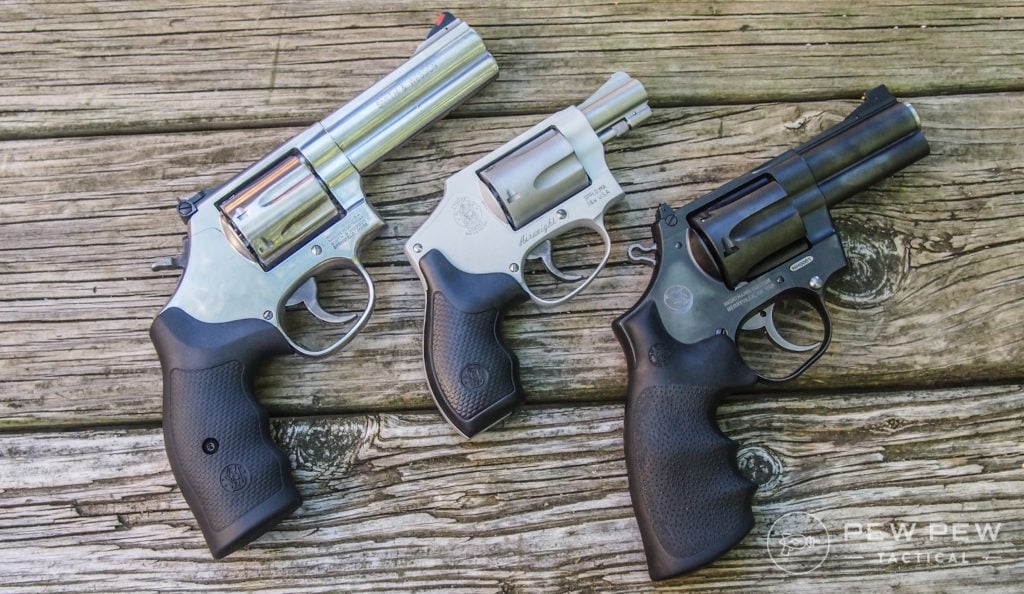
ARs:
- Does the charging handle work and can you lock the bolt back?
- Does the bolt cycle smoothly? (You can at least check basic operation using the charging handle and dry fire.)
- Does the magazine drop free of the magazine well or does it hang up? Can you seat the magazine fairly easily or does it get stuck?
- How about the safety, does it both move well and perform as it should?
- Try out the trigger, does it at least work? Yes, you can easily replace a trigger but if something is wrong with it right off that’s a warning sign that the gun itself may not be a good idea to buy.
- Is the handguard tightened and unmoving or is it loose?
- Are the sights–if there are any–usable and secure?
- Is the Picatinny rail usable and undamaged or has it been bent and dinged in ways that will make it difficult to use?
- If the rifle has a telescoping stock, does it work?
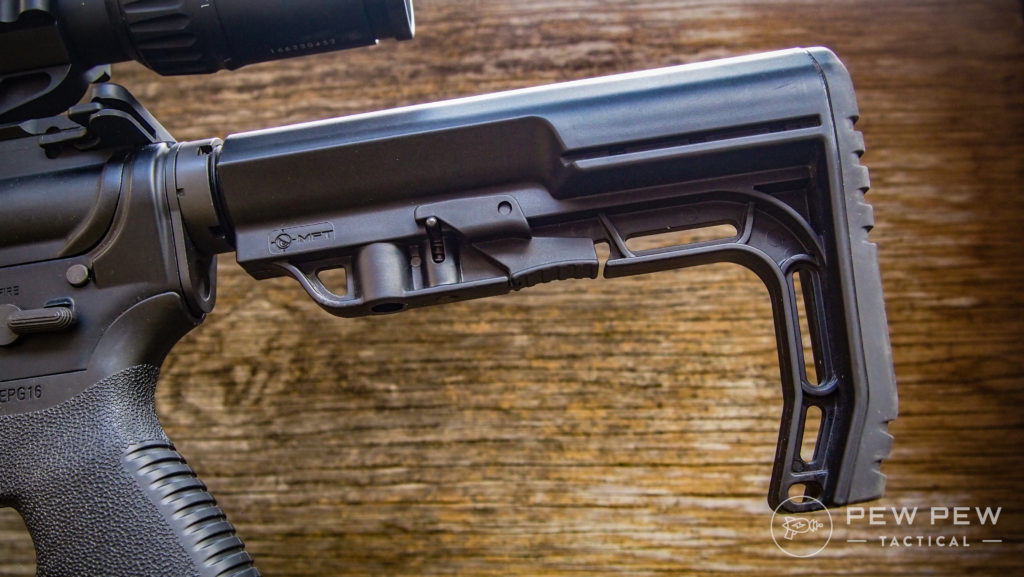
Bolt-action rifles and pistols:
- As above, check safeties, triggers, and magazines if there is one.
- Does the bolt cycle beautifully or is it sticky and clumsy? This does depend on the quality of the gun, too, so it’s up to you whether you’re going to hold out for a glass-smooth bolt or if you’re fine using one that’s a little rough.
- Is the barrel in good shape and can you check it at least with a light (bore scope would be way better)?
Lever-action rifles:
- See above lists for shared features.
- Can the lever be manipulated easily and does it cycle the bolt smoothly (yes, “smoothly” is a key word here)?
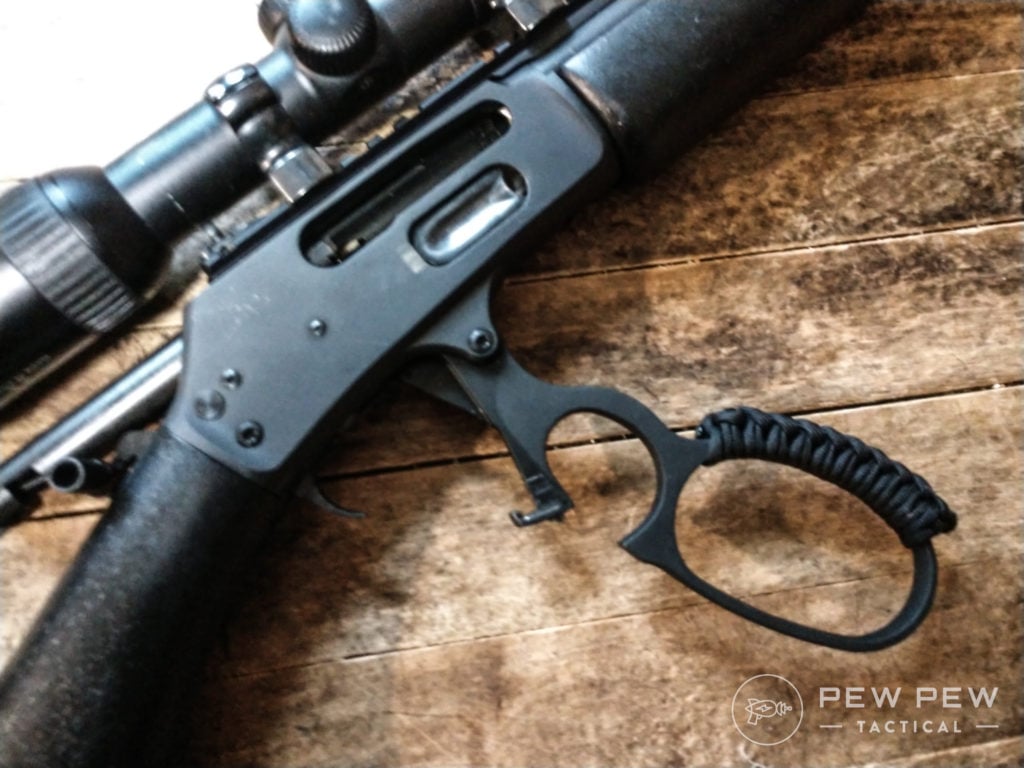
The Takedown
Take the time to field-strip the gun.
This gives you the opportunity to get a much closer look at the parts and also will let you know how well everything fits together.
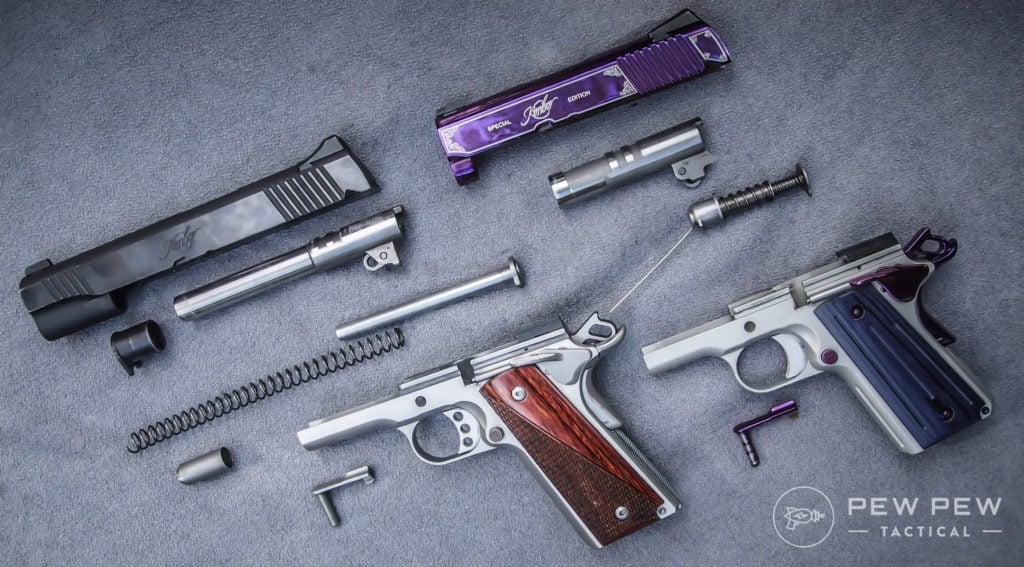
This doesn’t apply only to handguns, either. Open up those ARs, pull the bolts from bolt-actions, and at least remove grip panels from revolvers. Of course, you do need to know what you’re looking at (or take someone with you who does).
Don’t just consider aesthetics and external movement. Open the gun up and check things out.
Where to Buy
You’re most likely to end up at your LGS–Local Gun Store–when you’re gun shopping.
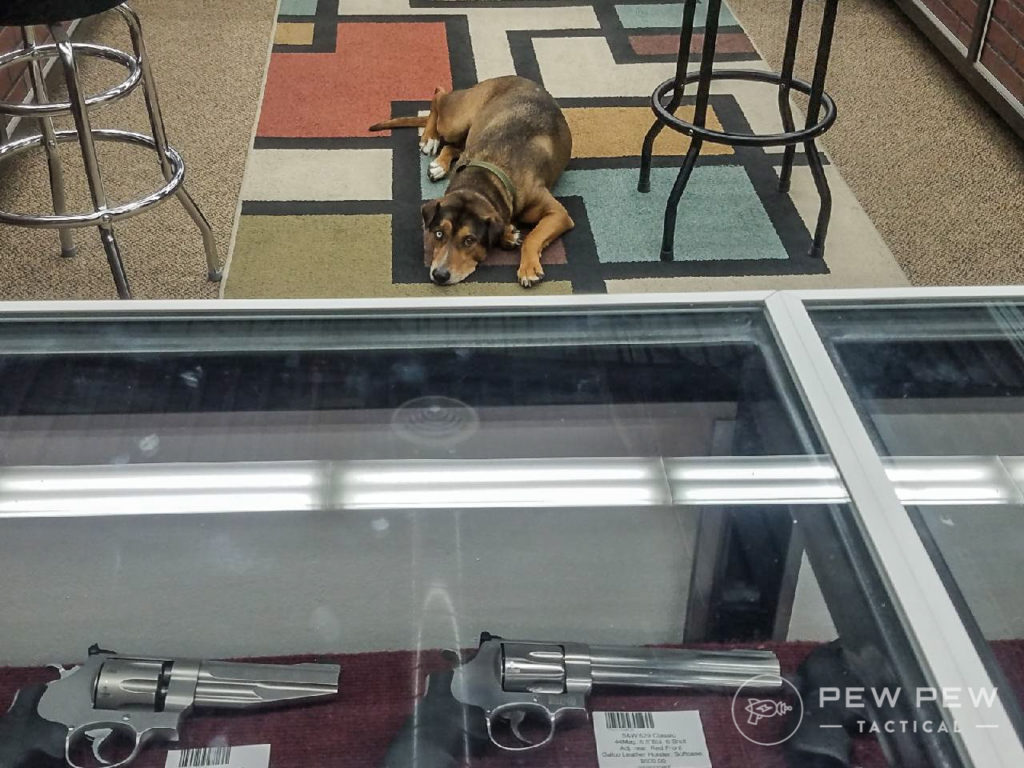
When possible, go to a store where you are confident in their honesty and they have a solid reputation. Your risk level goes up when you wander in the door of a random LGS. Take the time to talk to the guy behind the counter but don’t take his word as gospel.
Just because someone works at a gun store does not mean they have the tiniest shred of knowledge on a topic. As for shooting the gun, most of the time you will not be able to test-fire guns at the store but it doesn’t hurt to ask (obviously that means they have to have a range).
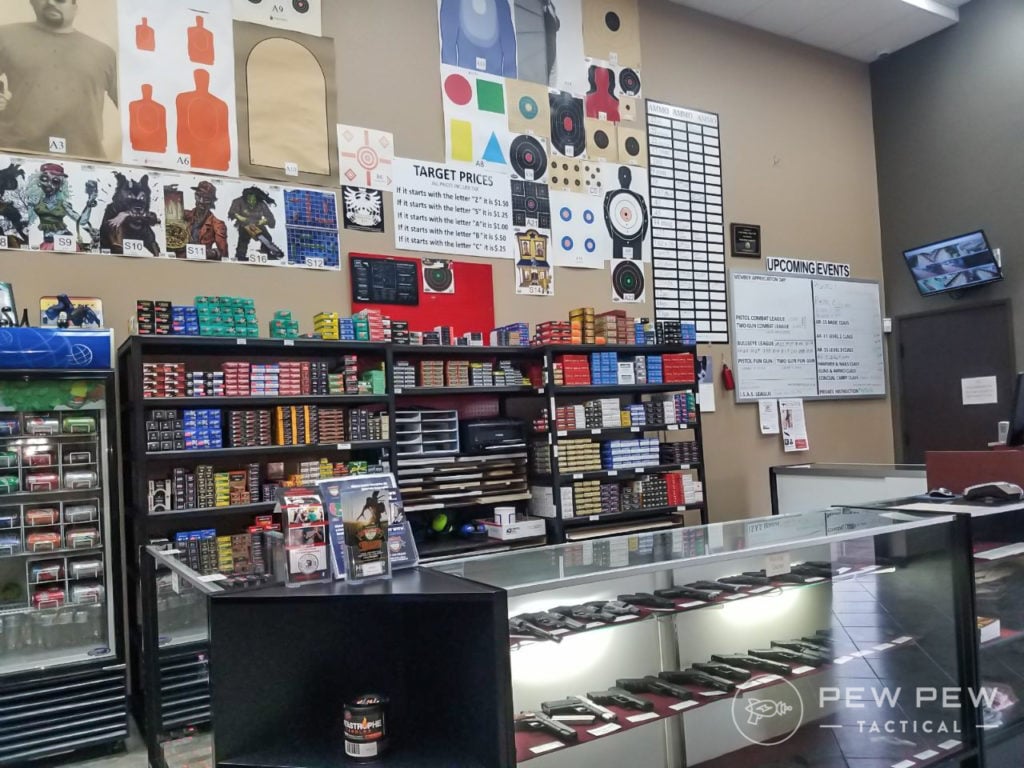
Online purchases are certainly popular now but there are major drawbacks to buying a used gun from an unknown source on the internet. Unless the gun is backed by some sort of legitimate guarantee you have no recourse if something is horribly wrong with it. Consider limiting online purchases to transactions with people you know either personally or through a reliable friend.
Curious about buying used guns online? Check out our Best Places to Buy Used Guns Online and our full review of Guns.com to read about our experiences!)
Pawnshops can be a great place to find a hidden gem but the odds of a good deal are slim. Then there’s the honesty factor and the likelihood the person working the register doesn’t know the first thing about firearms. If your own knowledge is lacking, that’ll present a serious problem.

The bottom line is to be aware of the risks involved with how you go about buying your used gun. Know the risks and decide how comfortable you are with them.
If you’re meeting up with someone…check out our How to Buy A Used Gun Safely guide.
Also, be familiar with the laws where you’re buying to be sure it is handled legally. For example, some states require a 4473 be filled out even for private sales. Do not count on someone else to know the laws, learn them yourself. Ignorance is not an excuse.
Guarantees
Many, if not most, brick-and-mortar stores offer some sort of guarantee.
It may be an incredibly brief one like having 48 hours to shoot it and find fault or you’re stuck, but there’s typically something in place.

If the seller refuses any sort of guarantee, whether at an LGS or online, that doesn’t necessarily kill the sale. Just stop and consider the wisdom of the purchase. Maybe it’s just fine and maybe it isn’t. This comes down to trusting your gut and the reputation of the seller.
If it’s a private sale obviously you aren’t getting a guarantee. The good news is you’re far more likely to be able to test-fire the gun if it’s a private purchase. Meet the seller at the range and run the gun a bit. Don’t be upset when a private seller won’t give you some sort of guarantee.
The SME
Okay, so your buddy may not be a Subject Matter Expert but maybe they know more than you do about the gun you’re looking to buy.
Don’t be afraid to ask for help buying a gun whether it’s new or used. Odds are good you’re buying that gun to use it to defend your life so treat it with importance.

What I don’t recommend is trusting social media to answer your questions. There are far too many people out there who think they know everything and type in a confident manner who are flat wrong and will only hinder, not help.
This is a great time to mention industry publications, both print and web. There’s a pervasive belief out there that any print magazine gun review is horrifically biased and untrustworthy but web-based reviews are totally cool.

Here’s the deal with honesty in gun reviews. You cannot and should not try to claim a specific publication is good or bad across the board. That depends more on the writers. Some writers are more honest than others. Some editors will edit negative comments out but by and large, they leave it as it was written.
I recommend following specific writers rather than publications (almost all our PPT writers also have work in other publications!).
Also, keep in mind reviews are specific to the person who wrote them meaning their experience may not reflect yours. And finally, no, writers are not given handpicked, perfect guns. Review guns are taken from the same stack of guns that go to your LGS.
Take advice with a grain of salt but do be willing to take help. It’s a major purchase. Make it count.
Dollar, Dollar Bills
A quick word on cost.
Before you deal with an LGS, an online seller, or a private sale, know what that gun is worth.
Find the MSRP just so you know what the manufacturer originally asked. Then go find used models–you can do this online–and make a list of the asking prices.

Remember that price depends on wear and be capable of checking wear for yourself. Know your numbers before you walk in the door to be sure you are getting a fair price.
Have a Gun
Get a gun. Get more than one gun. It’s always good to have at least one backup in case something happens to your concealed carry gun (whether it ends up as evidence taken in the aftermath of a self-defense shooting or, more likely, a part breaks). Same goes for competition and hunting.

Backup is good and so are options. Being a well-rounded shooter matters more than many gun owners realize. There really is something to be said for the ability to shoot multiple guns well rather than only one.
In fact, there are self-defense applications for those skills; what if you find yourself in a situation where you end up with a borrowed gun or one grabbed off the ground?
Parting Shots
Take the time to do your research and don’t be afraid to get hands-on and then walk away. You can always go back. Don’t rush into a purchase. But do buy used guns. There’s nothing wrong with pre-owned and you can never have too many guns.
Thinking about buying a used gun for the first time? Ask your questions in the comments. Old hand at buying used guns? Share your insights with us below. You might also want to check out the Best Places to Buy Guns Online and then our huge Gun Reviews section.

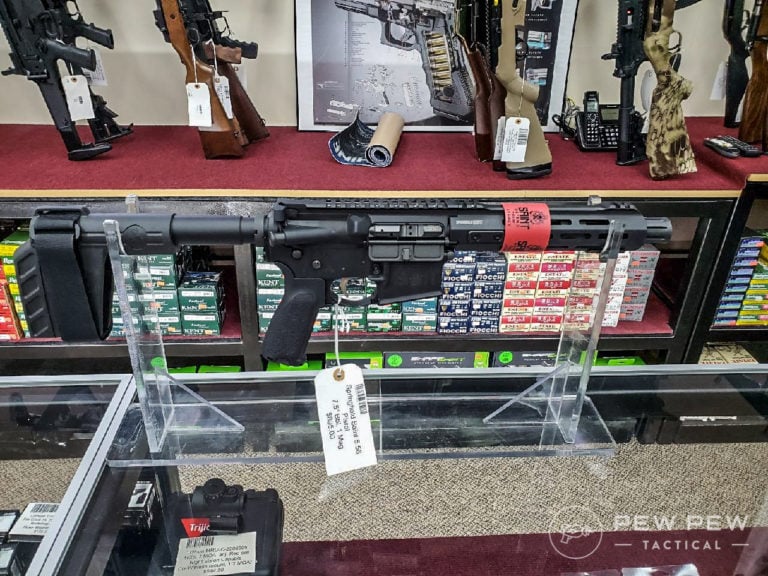
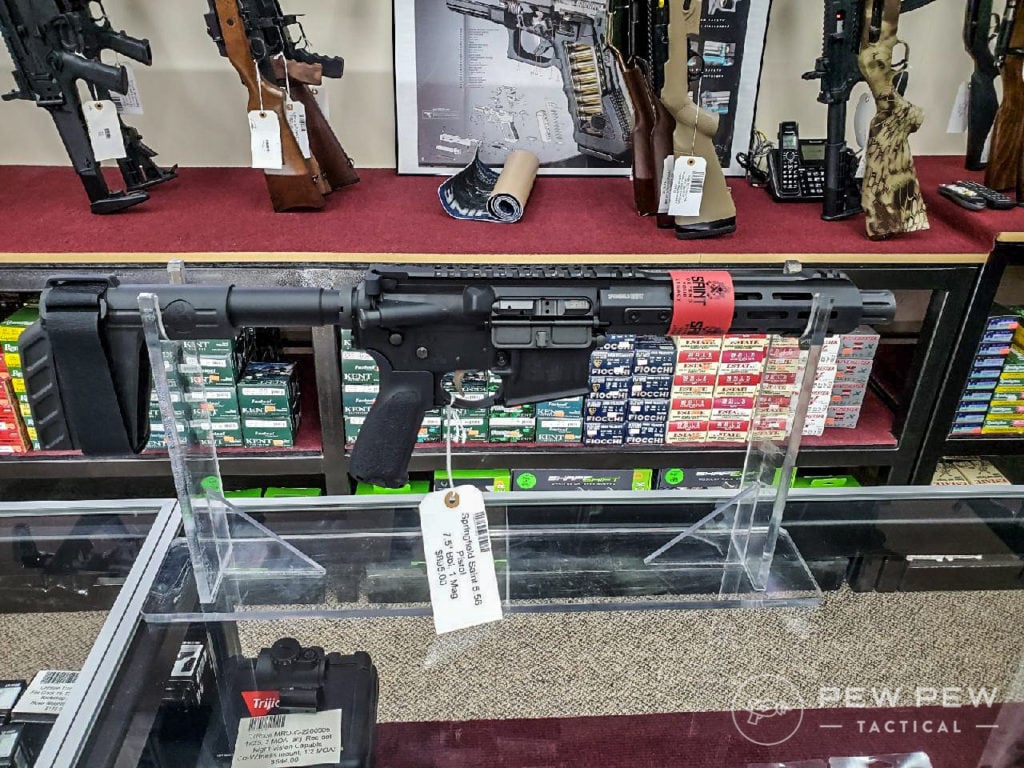







1 Leave a Reply
I’d like to make one suggestion that applies to all the various firearms mentioned in this article.
CHECK THE BARRELS CROWN. No matter how thorough you inspected the firearm. If the barrel crown shows any sign of damage or irregularity, you going to have accuracy issues.